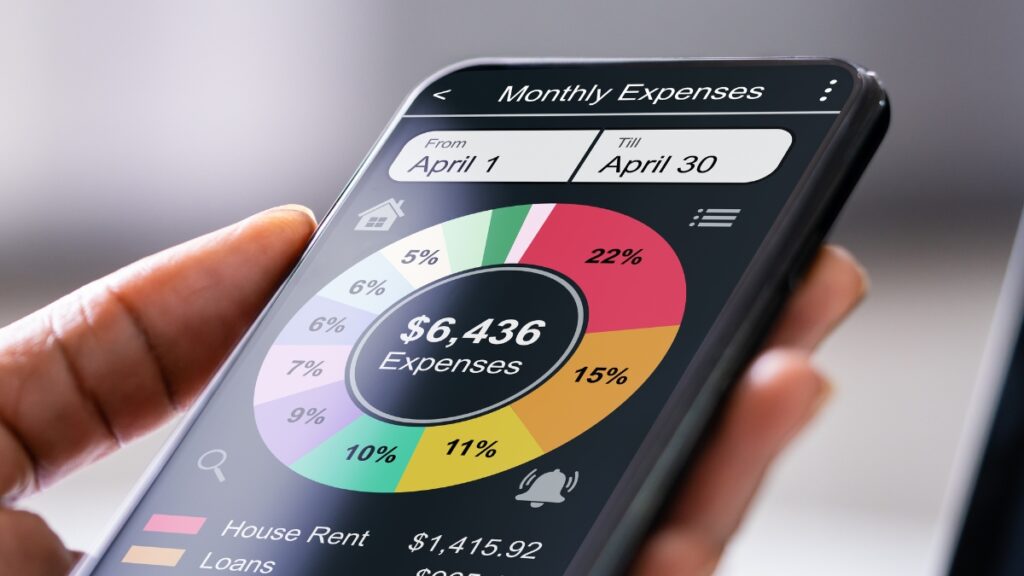
While you’re reading this sentence, someone just made $12 in investment returns—and they started with less money than you spent on lunch this week. You think you need $5,000 to start investing. You don’t.
You think you need to understand stock markets. You don’t. You think waiting until you “have more money” is the safe choice. It’s actually the most expensive mistake you’ll make.
This guide shows you how to start investing with $25 today, reveals the exact cost of waiting, and walks you through three simple investing for beginners options. You’ll learn how compound interest works and how to automate everything so you never think about it again.
The Real Cost of Waiting to Invest (Show Me the Money)
Let’s talk about what waiting actually costs you. Not in feelings. In real dollars.

Picture two people. Sarah starts investing $25 a month at age 25. Mike waits until he’s 35 to start. Both put in $25 every month. Both invest in the S&P 500, which has averaged about 10% returns annually over the last 30 years.
Sarah invests for 40 years. Her total contributions: $12,000. At age 65, she has roughly $158,000.
Mike invests for 30 years. His total contributions: $9,000. At age 65, he has about $57,000.
Mike contributed $3,000 less than Sarah. But he ends up with $101,000 less. That’s what waiting 10 years costs.
💡 Key Insight: Every year you wait doesn’t just cost you one year of contributions. It costs you decades of growth on those contributions. The money you invest at 25 has 40 years to multiply. The money you invest at 35 only gets 30 years.
Think about your daily coffee. Spend $5 today, and it’s gone. Invest that $5 at a 10% return, and in 30 years it becomes about $87. That’s not about guilt-tripping your coffee habit. It’s about seeing what’s really on the table.
Here’s the trap people fall into: “I’ll start investing when I make more money.” Research from the Federal Reserve shows that people who make $100,000 often save the same percentage as people who make $50,000. Sometimes less. Why? Because spending grows with income. Your lifestyle expands to match your paycheck.
💡 Action Tip: The amount you start with matters less than starting right now. A 25-year-old investing $25/month will likely beat a 35-year-old investing $100/month. Time is your biggest advantage, and you can’t buy it back.
The math is brutal but simple. Start now with small amounts, or start later with larger amounts and still end up behind. Compound interest rewards time more than money. Ten years of growth on your early investments beats ten years of larger contributions later.
Your future self can’t go back in time and invest. But your current self can start today. That’s the only move that matters.
💡 Reality Check: If you’re 25 and think “I have time,” you’re right—but only if you start now. If you’re 35 and think “I’m too late,” you’re wrong. The best time to start was 10 years ago. The second best time is today.
Why You Don’t Need Thousands to Start (The ETF Revolution)
Ten years ago, you needed serious money to start investing. Mutual funds demanded $1,000, $2,500, even $3,000 just to open an account. Most people didn’t have that lying around. So they waited. And waiting cost them.

Everything changed with ETFs—Exchange Traded Funds. Think of them as baskets of stocks you can buy like a single stock. Instead of buying 500 different companies one by one, you buy one ETF that owns all 500. Simple.
💡 What You Need to Know: ETFs trade on the stock market just like regular stocks, but they hold dozens or hundreds of companies inside them. When you buy one share of an ETF, you’re buying a tiny piece of hundreds of businesses. Instant diversification.
But here’s what really changed the game: fractional shares. Now you can buy 0.1 shares, 0.05 shares, whatever your $25 can afford. That expensive stock trading at $500 per share? You can own a piece of it with $25.
The big brokers figured out people wanted to start small. So they dropped their minimums to zero. Not $100. Not $50. Zero dollars.
💡 Where to Start: Fidelity, Vanguard, and Charles Schwab all let you open accounts with $0. No minimum balance. No maintenance fees for basic accounts. They make money when you trade, but even trading is often free now.
Here’s a quick comparison:
Fidelity: $0 minimum, free stock and ETF trades, great mobile app, fractional shares available
Vanguard: $0 minimum, free ETF trades, famous for low-cost index funds, app is less flashy but solid
Charles Schwab: $0 minimum, free trades, excellent customer service, bank integration if you want it
You don’t need to pick the “perfect” one. They’re all good. The best broker is the one you’ll actually use.
💡 Action Tip: Don’t spend two weeks researching which platform is 0.5% better. Just pick one of these three. You can always move your money later if you want. Starting beats optimizing.
The old excuse was “I don’t have enough money.” That excuse died. Now you can start investing with less than you’d spend on lunch. The barriers are gone. The only thing standing between you and investing is the decision to begin.
💡 Reality Check: If someone tells you that you need thousands to start investing, they’re working with outdated information. Or they’re trying to sell you something expensive. The ETF revolution happened. You missed nothing by being late. You can start today.
Your 3-Fund Portfolio: The Simplest Investment Strategy That Actually Works
Wall Street wants you to think investing is complicated. It’s not. You need three things: US stocks, international stocks, and bonds. That’s it.

This is called a 3-fund portfolio. It’s boring. It works. People who follow this simple strategy often beat people who spend hours picking individual stocks.
💡 The Core Idea: You spread your money across three baskets. US stocks give you growth from American companies. International stocks give you growth from companies everywhere else. Bonds give you stability when stocks drop. Together, they balance each other out.
Here’s a basic split that works for most people starting out: 60% US stocks, 20% international stocks, 20% bonds. This is called a 60/40 portfolio (60% stocks total, 40% bonds). As you get younger, you might want more stocks. As you get older, you might want more bonds.
For your $100 monthly investment, it looks like this:
$60 to VTI (Vanguard Total Stock Market ETF) – This owns basically every US company worth owning. Big companies, small companies, all of them. Expense ratio: 0.03% (you pay $3 per year for every $10,000 invested).
$20 to VXUS (Vanguard Total International Stock ETF) – This owns companies from around the world. Europe, Asia, everywhere except the US. Expense ratio: 0.07%.
$20 to BND (Vanguard Total Bond Market ETF) – This owns thousands of bonds. Government bonds, corporate bonds. When stocks crash, bonds usually stay steady. Expense ratio: 0.03%.
💡 Why These Funds: These three ETFs give you ownership in over 10,000 companies and thousands of bonds. You’re not betting on one company or one country. You’re betting on the global economy growing over time. History says that’s a good bet.
The expense ratios matter. Some funds charge 1% or more per year. These charge 0.03% to 0.07%. Over 30 years, that difference is worth tens of thousands of dollars. Low fees mean more money stays in your account.
💡 Action Tip: Buy all three funds every month, or rotate between them. If you invest $75 this month, maybe put $45 in VTI, $15 in VXUS, and $15 in BND. Don’t stress about perfect ratios when you’re starting with small amounts.
There’s an even simpler option: target-date funds. Pick one fund based on when you plan to retire. A target-date 2060 fund is designed for someone retiring around 2060. It holds stocks and bonds and automatically adjusts the mix as you age. More stocks when you’re young, more bonds as you get older.
Vanguard’s Target Retirement 2060 Fund (VTTSX) does everything the 3-fund portfolio does, but in one fund. You buy it and forget it. The fund managers rebalance for you. You just keep adding money.
💡 Decision Point: Choose the 3-fund portfolio if you want control and like the idea of managing three simple investments. Choose a target-date fund if you want to set it and never think about it again. Both work. Pick based on your personality, not which one is “better.”
Some people will tell you to buy individual stocks. To find the next Apple or Tesla. Here’s the truth: professional investors with teams of analysts usually can’t beat these simple index funds. You probably won’t either. And you don’t need to. These three funds will build wealth just fine.
💡 Reality Check: Boring beats exciting in investing. The 3-fund portfolio won’t give you amazing stories at parties. But it will probably give you more money in 30 years than the person bragging about their stock picks.
Best Investment Apps for Starting with $25 in 2025
You need an app that makes investing simple. Not simple-looking while being complicated. Actually simple.

Robo-Advisors: Investing on Autopilot
These apps ask you a few questions, then invest for you automatically. You add money. They buy funds, rebalance, and handle everything.
Betterment – Setup difficulty: 2/5. Monthly minimum: $10. Key feature: Tax-loss harvesting even on small accounts. Drawback: Costs 0.25% per year on top of fund fees. For a $1,000 account, that’s $2.50 annually.
Wealthfront – Setup difficulty: 2/5. Monthly minimum: $500 to start, but $1 after that. Key feature: Free financial planning tools. Drawback: Higher minimum to begin.
Schwab Intelligent Portfolios – Setup difficulty: 3/5. Monthly minimum: $5. Key feature: No advisory fees, just fund costs. Drawback: Keeps more of your money in cash than needed.
💡 Who Should Use These: You want zero decisions. You’re willing to pay a small fee for convenience. You’ll never log in to manually buy funds.
Traditional Brokerages: More Control, Still Simple
These give you more freedom to pick what you buy. The apps are clean and easy to use.
Fidelity Mobile App – Setup difficulty: 2/5. Monthly minimum: $0. Key feature: Fractional shares, clean interface, great research tools. Drawback: So many options it can feel overwhelming at first.

Charles Schwab App – Setup difficulty: 2/5. Monthly minimum: $0. Key feature: Excellent customer service and educational content. Drawback: App interface is good but not as modern as Fidelity’s.
Vanguard App – Setup difficulty: 3/5. Monthly minimum: $0. Key feature: Lowest-cost funds in the industry. Drawback: App looks like it was designed in 2015. Works fine, just not pretty.
💡 Who Should Use These: You want to pick your own funds (like that 3-fund portfolio). You don’t want to pay extra advisory fees. You’re okay clicking “buy” yourself.
What to Avoid Right Now
Day Trading Apps – Apps that encourage constant trading with flashy notifications aren’t for building wealth. They’re designed to make you trade more, which usually means losing more.
Crypto-First Platforms – If you’re learning to invest, start with stocks and bonds. Crypto is speculation, not investing. Maybe later, but not with your first $25.

Meme Stock Communities – Reddit can be fun. Building wealth with your rent money based on memes is not fun. Keep these separate.
💡 Reality Check: The best app is the one you’ll actually use consistently. A “worse” app you use every month beats a “perfect” app you never open.
Most people overthink this choice. Fidelity and Schwab are both great. Betterment and Wealthfront are both fine if you want automation. Pick one based on what sounds easier to you. You’re not locked in forever.
💡 Action Tip: Download one app today. Just download it. You don’t have to open an account yet. Click around for five minutes. See if the interface makes sense to you. That’s how you’ll know if it’s the right fit.
The perfect app doesn’t exist. The app you actually use is the only one that matters.
How to Actually Do This Today (Step-by-Step Setup)
Stop researching. Start doing. Here’s exactly how to open an account and invest your first $25. This takes less time than scrolling social media.

Step 1: Pick Your Platform (Right Now)
Ask yourself one question: Do I want to think about this or not?
Want zero thinking forever? Open a Betterment or Wealthfront account. Answer their questions. Set up monthly transfers. Done. You’re now an investor.
Want simple but some control? Open a Vanguard or Fidelity account. Buy a target-date fund. One fund. That’s it. Add money monthly.
Want to learn as you go? Open a Fidelity or Schwab account. Start with the 3-fund portfolio. Buy VTI, VXUS, and BND as you add money.
Don’t overthink this. You can change your mind later. Just pick one now.
💡 Decision Helper: If you’re still stuck, go with Fidelity and buy a target-date fund. It’s the middle ground between automation and control.
Step 2: Open the Account (10 Minutes or Less)
You’ll need: Your phone, your Social Security number, your bank account info, and a driver’s license or ID.

Here’s what happens:
- Click “Open an Account” on the platform’s website or app
- Choose “Individual Brokerage Account” (not IRA, not joint, just individual)
- Enter your personal info (name, address, birth date, Social Security number)
- Answer questions about employment and income (they’re required to ask by law)
- Verify your identity (usually instantly)
- Link your bank account
- Agree to terms
The platform will ask about your “investment experience” and “risk tolerance.” You’re new, so say so. Be honest. It doesn’t affect what you can buy.
💡 Security Note: Use a strong password and turn on two-factor authentication. Your investment account needs better security than your email.
Step 3: Add Money
Once your account is open, transfer your first $25. Most platforms let you link your bank account and transfer money instantly or within 1-2 business days.

Here’s what to do:
- Click “Transfer” or “Add Money”
- Enter $25 (or whatever amount you’re starting with)
- Choose “One-time” for now
- Confirm the transfer
The money will sit in your account as cash until you invest it. That’s normal. You’re not invested until you buy something.
💡 Important: Your money doesn’t grow just by being in the account. You have to actually buy funds or stocks. Don’t let it sit as cash for months.
Step 4: Buy Your First Investment
If you chose a robo-advisor, it’ll invest for you automatically. Skip to Step 5.

If you’re at Fidelity, Vanguard, or Schwab, you need to buy something:
For a target-date fund:
- Search for “Target Retirement 2060” (or 2055, 2065, whatever’s close to when you turn 65)
- Click on the fund (VTTSX at Vanguard, FDKLX at Fidelity)
- Click “Buy”
- Enter the dollar amount ($25)
- Confirm
For the 3-fund portfolio:
- Search for “VTI”
- Click “Buy”
- Enter dollar amount (like $15)
- Confirm
- Repeat for VXUS ($5) and BND ($5)
The platform might show you share prices and ask how many shares you want. Choose “dollar amount” instead. It’s easier.
💡 What Happens Next: Your order processes, usually instantly. You’ll own tiny fractions of shares. You’ll see the value in your account. Congrats—you’re an investor.
Step 5: Set Up Automatic Transfers
This is the most important step. Manual investing fails because you forget or find excuses. Automatic investing works because it happens whether you remember or not.

- Go to “Transfers” or “Automatic Investments”
- Choose “Recurring Transfer”
- Select your bank account
- Enter $25 (or your amount)
- Choose frequency: monthly, twice a month, or every paycheck
- Pick a date (right after payday works best)
- Confirm
Some platforms let you auto-invest the money too. Turn that on if available. Your $25 transfers in and automatically buys your chosen fund. You never have to log in.
💡 The Automation Rule: If you have to remember to invest, you’ll stop within three months. Set it up to happen automatically and you’ll still be investing in three years.
What If You Make a Mistake?
You probably won’t. But if you buy the wrong fund or transfer the wrong amount, you can fix it. You can sell funds and buy different ones. You can change your automatic transfer amount. Nothing is permanent except time, and you can’t get that back.
💡 Reality Check: You’ll feel weird after buying your first investment. That’s normal. You’re not used to seeing money turn into “shares” and watch the number bounce around. Give it a week. The weird feeling fades.
The hardest part is starting. You just did it. Everything from here gets easier.
Common Mistakes to Avoid (I’ve Seen Them All)
You’re going to want to screw this up in predictable ways. Here’s how to avoid the biggest mistakes.
Trying to Time the Market
You’ll see the news say stocks are “too high” or hear someone say they’re waiting for a crash to start investing. Don’t wait. You’ll wait forever.

The market always feels too high. People said that in 2010, 2015, 2020, and now. People who waited missed massive gains. Studies show that about 90% of professional investors can’t time the market successfully. You won’t either.
The solution is dollar-cost averaging. That’s a fancy term for “invest the same amount at the same time every month.” You’ll buy when prices are high. You’ll buy when prices are low. Over decades, the average works out fine.
💡 The Math: If you invest $25 every month for 30 years, you’ll make 360 purchases. Some at high prices, some at low prices. The few times you buy at the peak don’t matter when you’ve made hundreds of purchases.
Checking Your Account Too Often
Your account will go down sometimes. That’s not a problem. It’s normal. But if you check every day and see red numbers, you’ll panic.
Check your account quarterly. Every three months. Look at the balance, make sure your automatic transfers are working, and close the app. That’s it.
💡 Reality Check: Daily price changes are noise. Monthly changes are noise. Yearly changes start to matter. Decade-long trends are what build wealth. Zoom out.
Chasing Hot Stocks and Crypto
Someone will make $50,000 on a meme stock. You’ll hear about it. You’ll want in on the next one. Don’t.

For every person who makes money on random stock picks, nine people lose money quietly. You only hear about the winners. Same with crypto. The people shouting about gains are rare. Most people lose.
Boring index funds beat exciting stock picks over time. That’s not opinion. It’s what the data shows. You’re not smarter than the market. Neither am I. We don’t need to be. We just need to own a piece of everything and wait.
💡 Action Tip: If you really want to try picking stocks or buying crypto, set aside money separate from your real investments. Call it your “tuition fund” because you’re probably going to lose it while learning. Keep your serious money in boring funds.
Stopping When You See Losses
Your account will drop in value. The market will crash. It always does. Every few years, stocks fall 20%, 30%, sometimes more.
You haven’t lost money until you sell. If you own shares of VTI and the price drops, you still own the same number of shares. The price is just temporarily lower. It’ll come back. It always has.
The S&P 500 has crashed many times. It recovered every single time. The average recovery time after a major drop is about two years. But if you sell during the crash, you lock in real losses.
💡 Crisis Plan: When your account drops 20%, do absolutely nothing. Don’t log in. Don’t check the news. Keep your automatic investments running. You’re buying funds at discount prices. That’s good for long-term gains.
The Biggest Mistake: Stopping
Most people quit investing within the first year. They stop automatic transfers. They forget about it. They get discouraged by small balances or scary news.
The people who win at investing are the ones who keep going. Through crashes, through gains, through boredom. They just keep adding money every month for 20, 30, 40 years.
💡 Reality Check: Your first year balance will look tiny. Your fifth year balance will look small. Your fifteenth year balance will look interesting. Your thirtieth year balance will shock you. You have to make it to year 30. That means not quitting in year one.
Investing rewards patience and punishes panic. Be patient. Don’t panic. Keep going.
What Happens After You Start? (Your First Year of Investing)
Here’s what to expect so you don’t quit when things feel weird.
Months 1-3: Nothing Feels Different
You’ll invest $25 or $50 or $100. Your account balance will be tiny. It’ll bounce up and down by a few dollars. You’ll feel like this is pointless.
It’s not pointless. You’re building a habit. The habit is worth more than the money right now. You’re proving to yourself that you can do this. That matters.
💡 What’s Actually Happening: Your money is working even when it doesn’t feel like it. Every dollar you invest now has 30+ years to grow. That $25 from month one will be worth way more than the $25 you invest in year ten.
Months 6-12: You Start Seeing Patterns
Your balance is growing. Not from gains—mostly from your contributions. You’ve added $150 to $600 depending on how much you invest monthly. The number is real now.
You’ll notice the account goes up and down. That’s the market. Some days it’s up $5. Some days it’s down $8. You’ll start to care less about the daily changes. That’s growth.
💡 Milestone Check: If you’re still investing at month twelve, you’ve beaten most people who say they’ll “start soon.” You didn’t just start. You kept going. That’s rare.
Year 2 and Beyond: You’ll Want More
Once the habit is automatic, you’ll want to increase contributions. That’s good. Every time you get a raise, bump your investment by $10 or $25 monthly. You won’t miss it, and future you will appreciate it.
You might start thinking about IRAs (retirement accounts with tax benefits) or other investment types. That’s fine. But don’t abandon what’s working. Keep your automatic investments running while you explore.
💡 When to Get Help: You don’t need a financial advisor when you’re starting with $25 monthly. You don’t need one at $5,000 or $10,000 either. Around $100,000 in investments, it might make sense to talk to a fee-only advisor (one you pay directly, not one who earns commissions). Before that, you’re fine on your own with simple index funds.
The Long Game
Your first-year returns might be 10%. They might be -5%. Don’t judge your strategy by one year. The stock market rewards decades, not months.
People who invested $100 monthly in the S&P 500 for the last 30 years have over $260,000 now, even though they only contributed $36,000. That’s the power of staying in the game.
💡 Reality Check: You won’t feel rich after one year. You won’t feel rich after five years. Around year ten, you’ll start thinking “oh, this is actually working.” That’s normal. Stay patient.
The money grows slowly at first, then faster as compound interest kicks in. Your job is simple: keep adding money and don’t stop. Time does the rest.
Conclusion
Starting with $25 isn’t about the money. It’s about the habit. Your $25 monthly won’t make you rich next year. But the compound interest on that $25 over 30 years will shock you.
More importantly, starting today with any amount breaks the mental barrier keeping you from building wealth. You stop being someone who “should invest someday” and become someone who invests. That identity shift matters more than the dollar amount.
The perfect time to start doesn’t exist. You’ll never have enough money, enough knowledge, or enough confidence. Start anyway. Pick one platform from this guide. Set a timer for 15 minutes. Open an account before you close this tab.
Your future self—the one who’s 10, 20, 30 years older—will thank you for starting today instead of waiting for “the right time” that never comes.
Remember: Learning how to start investing with $25 today is worth more than waiting to invest $500 tomorrow. Compound interest doesn’t care how much you start with. It cares how long you stay in the game.
Your move is simple. Start small. Start now. Keep going. That’s the whole strategy.






